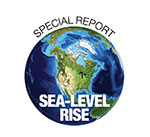You have 0 Articles Left This Month. Join ENR UNLIMITED for Full Access.
The latest news and information
#1 Source for Construction News, Data, Rankings, Analysis, and Commentary
JOIN ENR UNLIMITEDCopyright ©2025. All Rights Reserved BNP Media.
Design, CMS, Hosting & Web Development :: ePublishing
 Despite Ike’s effects, Houston didn’t bear the full brunt of the storm. The ship channel, for example, saw storm surge of 13 ft—just under its 15-ft elevation.
Despite Ike’s effects, Houston didn’t bear the full brunt of the storm. The ship channel, for example, saw storm surge of 13 ft—just under its 15-ft elevation.